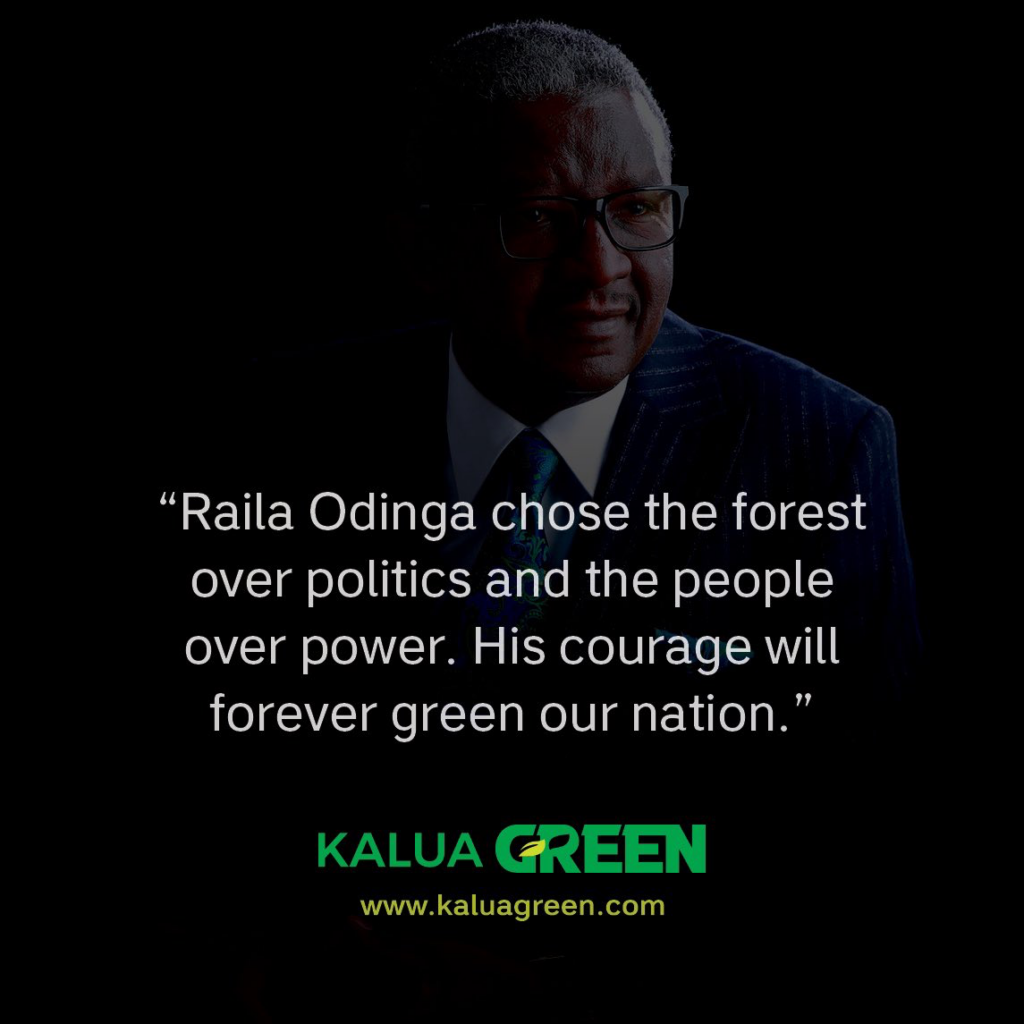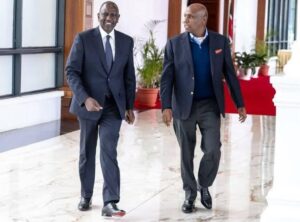At dawn, the mist over the Mau sits like a prayer. A boda rider fills a jerrycan, a tea picker pauses to read the clouds, and a child watches a river that begins among trees. There was a day when Raila Amolo Odinga chose those waters over applause. He stood for restoration when it was easier to promise comfort. Leadership is tested when tomorrow demands more than today can offer.
Few understood how serious that decision was. The Mau Forest Complex isn’t just scenery; it’s Kenya’s most vital water tower, supplying water that powers turbines, supports farms, and fills taps across the region. Scientists estimate its regulating services are worth about one hundred sixty-two billion shillings each year, a silent effort by rain and roots that’s worth around three thousand shillings for each Kenyan. That’s stewardship measured in supper on the table and light in the socket.
I respect that courage because I saw its importance firsthand. Years later, I led the Kenya Water Towers Agency for six years, carrying the same passion to protect hundreds of our towers and the millions they support. We worked with communities, counties, and national agencies to treat forests as infrastructure, not just decoration. That ethic aligns with the core of my philosophy Green for Life, the belief that every decision should leave tomorrow greener, fairer, and more dignified than today.
A crisis often reveals character. During the great drought of 2019, professionals from the Ukambani region, under the umbrella of Mutui Museo, appealed for urgent water access. According to several present, Raila listened and asked budget officials to reallocate funds toward a two-billion-shilling response for priority water projects. It was not theatrics. It was the straightforward work of addressing thirst before applause.
Raila’s long walk taught lasting lessons. He understood that water towers are national treasures and continent-wide anchors. Africa’s cities grow and our farms support nations only if our headwaters remain healthy. The most effective politics is the one that keeps rivers flowing.
Kenya currently faces significant water stress. We have about 647 cubic meters of renewable freshwater per person annually, which is well below the global security threshold of 1,000 m³ and is expected to decrease further by 2030. Every hectare of forest lost diminishes our energy output, crop yields, and public health; each restored hectare creates numerous jobs in tea, tourism, and industry. Protecting forests isn’t charity; it’s sound economic sense.
When Professor Wangari Maathai passed away, I encouraged Kenyans to plant seventy-one trees in her honor, one for each year of her life. President Ruto, then a Cabinet Secretary, led the effort. That simple act grew into a movement now called Plant Your Age, where remembrance becomes renewal. Today, I call on Kenya to mourn Raila Amolo Odinga in a way that continues to grow. Let every Kenyan, organization, and friend of Kenya plant eighty trees in his honor, one for each year he lived, and one for every river, dream, and fight he carried for us.
If forty-five million Kenyans each plant eighty trees, we will add 3.6 billion new lives of greenery to this land. Schools can record saplings alongside exam scores. Matatu routes can evolve into corridors of shade. Counties can identify these trees and protect them for future generations. The diaspora can participate by planting from afar. This is how grief transforms into a act of national service.
Let us also turn his legacy into practical actions where we live: protect the riparian edges, stop the exploitation, harvest rain from every roof, replace each cut-down pole with a grove, and teach our children that forests are their first factories and rivers their first roads. This is how a nation gains dignity.
He taught us that leadership is having the courage to choose the forest over votes. Indeed, great nations are built when leaders choose forests over votes and citizens choose tomorrow over noise.Think Green, Act Green.


